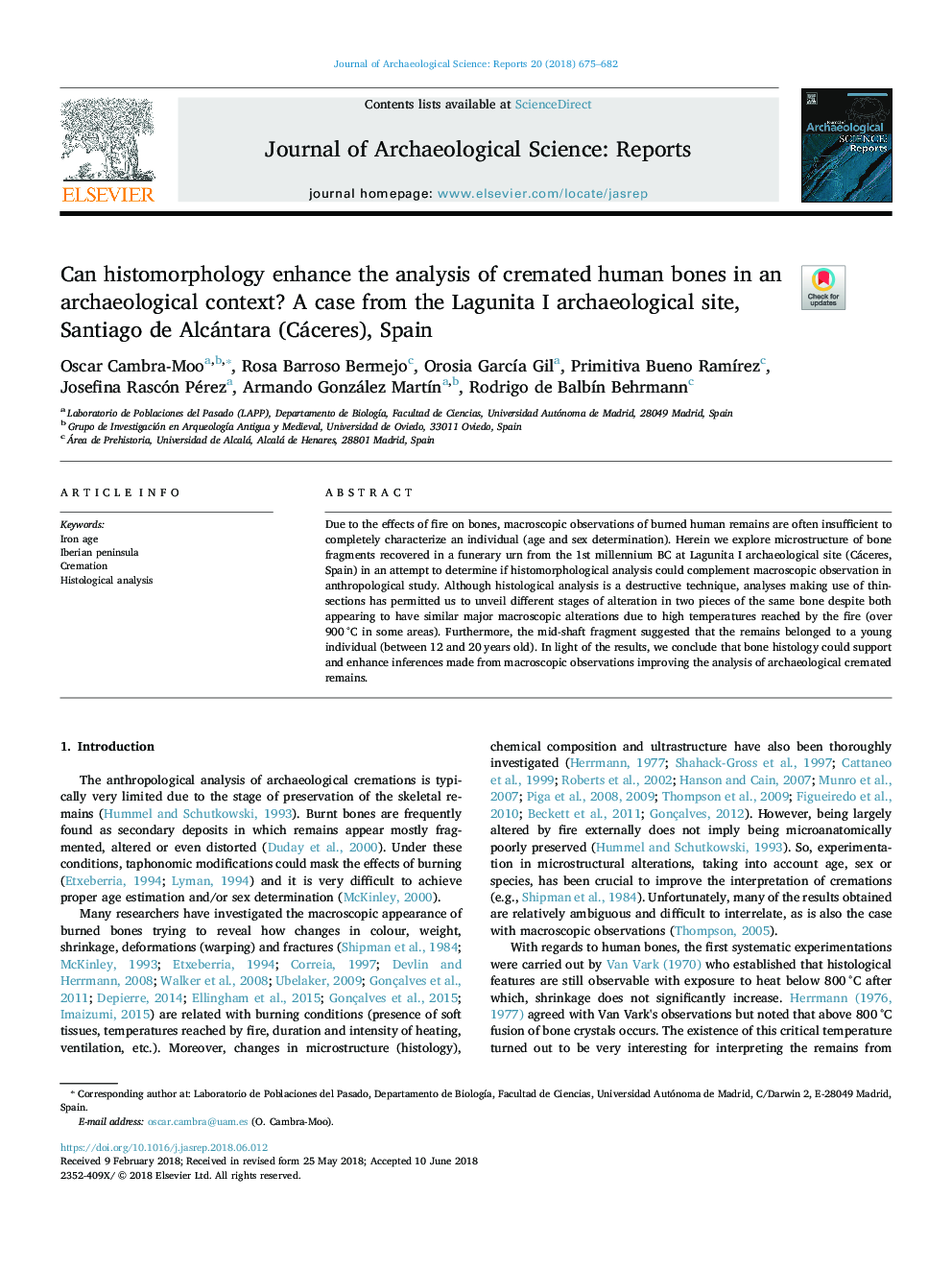| Article ID | Journal | Published Year | Pages | File Type |
|---|---|---|---|---|
| 7444621 | Journal of Archaeological Science: Reports | 2018 | 8 Pages |
Abstract
Due to the effects of fire on bones, macroscopic observations of burned human remains are often insufficient to completely characterize an individual (age and sex determination). Herein we explore microstructure of bone fragments recovered in a funerary urn from the 1st millennium BC at Lagunita I archaeological site (Cáceres, Spain) in an attempt to determine if histomorphological analysis could complement macroscopic observation in anthropological study. Although histological analysis is a destructive technique, analyses making use of thin-sections has permitted us to unveil different stages of alteration in two pieces of the same bone despite both appearing to have similar major macroscopic alterations due to high temperatures reached by the fire (over 900â¯Â°C in some areas). Furthermore, the mid-shaft fragment suggested that the remains belonged to a young individual (between 12 and 20â¯years old). In light of the results, we conclude that bone histology could support and enhance inferences made from macroscopic observations improving the analysis of archaeological cremated remains.
Related Topics
Social Sciences and Humanities
Arts and Humanities
History
Authors
Oscar Cambra-Moo, Rosa Barroso Bermejo, Orosia GarcÃa Gil, Primitiva Bueno RamÃrez, Josefina Rascón Pérez, Armando González MartÃn, Rodrigo de BalbÃn Behrmann,
